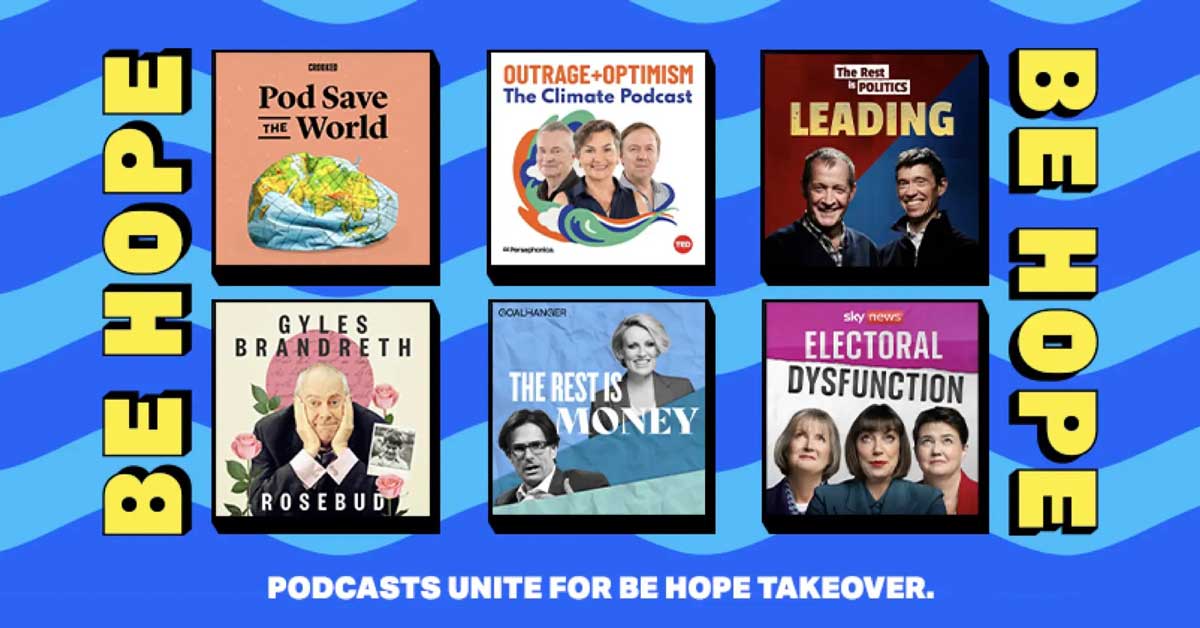A lot can and has happened in the history of humanity. While it may be easier to pinpoint all the bad that’s happened over the last few centuries, the numbers don’t lie: we’ve also made a lot of progress.
In all areas of life — ranging from healthcare to innovation to arts and culture to education — we’re seeing significant changes for the better.
The data tells us that there have always been helpers in the world and it's thanks to their labor, empathy, and generosity that we’re seeing huge advancements for society as a whole.
1. Life Expectancy Has Gone Up
It's clear and simple: people are living longer today — and in better health — than they were decades ago.
What does this mean? It means that advancements in society (whether it be in medicine or infrastructure) have made it so that human beings can extend their lifespan.
Historical data from Our World In Data have shown that global life expectancy has increased drastically, with substantial long-run improvements in all countries around the world.

It means that we're not seeing just increased life expectancy in just one country; we're seeing it in every country.
According to Our World In Data, there have been huge changes in the numbers from even a century ago.
For example, life expectancy in India and South Korea was as low as 23-years-old one hundred years ago: and now, it's tripled in India and quadrupled in South Korea.

In 1800, life expectancy around the world was as low as 32 years. In 1950, the global average was 48. But in 2012, the number rose to 78 years.
The living conditions around the world have made it possible for people to live longer and that’s always good news to celebrate.
2. Diseases Are Going Away
What used to plague us is now on the decline.
Over the course of the last few centuries, there have been incredible advancements in science that have allowed us to fight even the worst of diseases.
Smallpox, which was officially eradicated in 1980, is a great example. But we've continued to make progress against other diseases since then.

From malaria to AIDS — and even cancer — the numbers show that every year, there are fewer and fewer people affected by infectious diseases.
Between 1996 and 2001, more than 3 million people were infected with HIV. But in 2017 and every year before then, the number of new infections began to decline until it reached its lowest number (below 2 million) since 1990.
The number of AIDS-related deaths swept through the 90s, but the annual number of AIDS-related deaths has been halved since then. In 2017, fewer than 1 million people died from AIDS.

Between 1996 and 2001 more than 3 million people were infected with HIV every year. Since then the number of new infections began to decline and in 2017 it was reduced to below 2 million. The lowest number of new infections since 1990.
The number of AIDS-related deaths increased throughout the 1990s and reached a peak in 2005, 2006 when in both years close to 2 million people died. Since then the annual number of deaths from AIDS declined as well and was since halved. 2017 was the first year since the peak in which fewer than 1 million people died from AIDS.
The chart also shows the continuing increase in the number of people living with HIV. The rate of increase has slowed down compared to the 1990s, but the absolute number is at the highest ever with more than 36 million people globally living with HIV. / Courtesy of Our World in Data
Malaria, a disease transmitted through infected mosquitoes, is also on the decrease.
Since the beginning of the 21st century, the number of people who die from malaria has been halved.
The death toll went from 839,000 in 2000 to 438,000 in 2015.

Since the beginning of the 21st century, the WHO has published global estimates of the number of people that die from malaria.
In these 15 years the global death toll has been cut in half: from 839,000 deaths in 2000 to 438,000 in 2015. / Courtesy of Our World in Data
3. More People Are Getting An Education
The right to education — particularly for women — has been an ongoing effort since the dawn of time.
But thankfully, more and more people are going and staying in school.
The value of education itself has only increased with time, with global literacy rates going up over the last two centuries.

According to Our World in Data, secondary and tertiary education have also seen drastic growth, with global average years of schooling being much higher now than a hundred years ago.
The growth of world literacy really took off after 1800, when governments around the world saw an expansion of basic education as a global priority.
Since the 1950s, there's been a 20 percent decrease in illiteracy around the world. Data also shows that younger generations are progressively getting better educated than older generations and the number of people who have zero formal education is on the decline around the world.

In 1998, Our World in Data estimates that 381 million children were out of school, but that number dropped to 263 million worldwide despite an increase in the global youth population.
All in all, more people are getting their education and it continues to be a basic right worth fighting for.
4. Fewer People Are Living In Poverty
There are a number of factors that contribute to poverty and groups like women, religious minorities, and racial minorities are the most vulnerable.
According to Our World In Data, 85 percent of the world live on less than $30 per day, two-thirds live on less than $10 per day, and every tenth person lives on less than $1.90 per day.
But what history also tells us is that the number of people living in absolute poverty has fallen with every decade.

According to Our World in Data, there were 1.9 billion people living in extreme poverty in 1990.
With a reduction to 735 million in 2015, this means that on average, every day in the 25 years between 1990 and 2015, 128,00 fewer people were living in extreme poverty.
In 1960, 45 percent of the world population were living in absolute poverty, with the number dropping to 24 percent in 1993.
Since then, the share of extremely poor people in the world has declined quickly. This has also had a positive effect on world hunger rates — and inspired all of us to work to ensure everyone has enough to eat.
In 32 years, the share of people living in extreme poverty was divided by 4, reaching levels below 10% in 2015.
You might also like: The best quotes about reducing poverty & world hunger
A version of this article was originally published in The Change Edition of the Goodnewspaper — our monthly print newspaper filled with good news.
You can get your own Goodnewspaper in the mail every month by becoming a subscriber.





